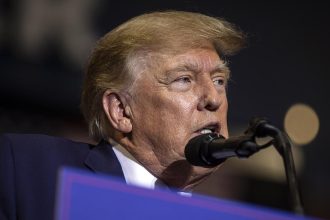The number of meetings is going up from 1,000 to 1,250 per day.
Even though numbers have dropped since Title 42, the Biden administration is boosting the number of migrants it permits into the U.S. through the notorious CBP One app to over 40,000 a month.
According to Homeland Security, refugees could make 1,250 daily appointments to enter ports of entry. This means that close to 40,000 people will be let in each month. It used to let people make 1,000 bookings a day.
The app was expanded in January to allow refugees near the U.S.-Mexico border to arrange appointments. The administration’s goal to reduce illegal crossings by making authorized routes easier relies on this.
The border appointments are in addition to the 30,000 Cuban, Nicaraguan, Haitian, and Venezuelan migrants brought into the U.S. each month on humanitarian parole. In addition, the government has drastically increased the number of refugees permitted in and built up facilities to help newcomers locate legal refugee and job prospects.
A spokesperson said, “The process cuts out smugglers and gives noncitizens a safe, orderly, and humane way to enter the United States through ports of entry instead of trying to sneak in.” “We will continue to punish migrants who cross the border illegally, and those who don’t have a legal reason to stay in the U.S. will be sent back.”
The app works with the administration’s “Circumvention of Lawful Pathways” rule, which says that migrants can’t ask for asylum if they entered the country illegally and didn’t ask for protection in a country they went through before. The rule says that migrants must use the app. Still, an exception exists if the app couldn’t be used because of “extenuating circumstances, a significant technical failure, or another applicable exception.”
So far, the government has pointed to a few successes. With the end of the Title 42 public health order, which let migrants at the border be quickly sent back because of COVID-19, it was thought that the number of migrants would increase. But the number of people has dropped by as much as 70% from its all-time high before the order was lifted.
But the app and the refugee rule have been challenged in court by people on the left and right. This week, 18 states led by Republicans fought against the protection rule, calling it a “smoke screen” that lets immigrants into the U.S. illegally under the guise of being legal.
The case says that the rule doesn’t address what’s causing the migrant crisis but instead “tries to define the problem away by re-characterizing what would be illegal crossings as “lawful pathways.”
“The Defendants say that the Circumvention Rule will stop people from crossing the border illegally, cut down on the number of new immigrants coming to the U.S. illegally, and make it less likely that people will use human smuggling networks. In the case, the states say, “The truth is that the Circumvention Rule is a mix of a half-measure and a smoke screen.” “It has a lot of exceptions, and it’s part of a larger effort by the Biden Administration to hide the real situation at the Southwest Border.”
That case came after one that Texas had filed a week before. That one was about how the CBP One app was used. In this complaint, the government encourages people to cross the border “without proving that they are exempt from deportation or have a legal reason to stay in the country.”
The Biden Administration’s app to administer the southern border “doesn’t even meet the lowest standard of competence.” t also breaks the laws that Congress passed to control immigration, so the Final Rule should be stopped.”
Left-wing groups have also taken issue with the app and the rule. They say that limiting asylum claims to people who have used the app illegally cuts down on the number of people who can make an asylum claim, which they say is a right for any foreigner who wants to create one. They have also noted that technology problems made it hard for migrants to use the app initially.
The American Civil Liberties Union and other groups claim in a complaint that the new rule makes it more challenging for migrants to receive refuge, regardless of how they enter the country, and forces them to use a faulty program.















